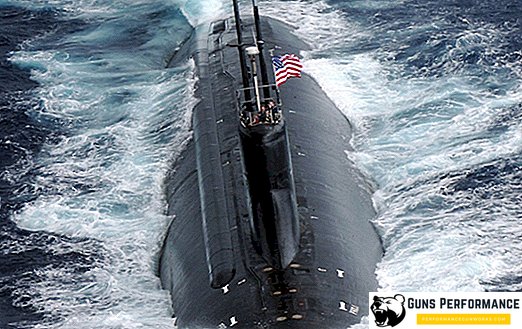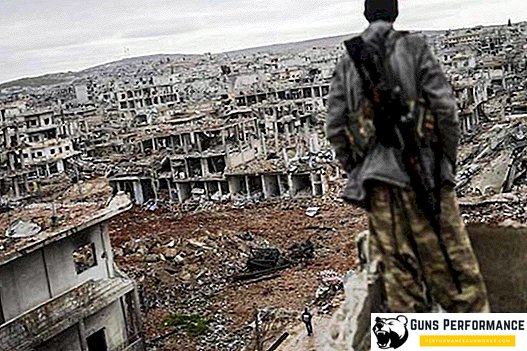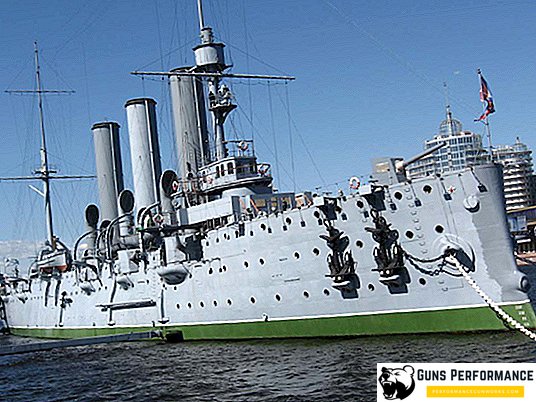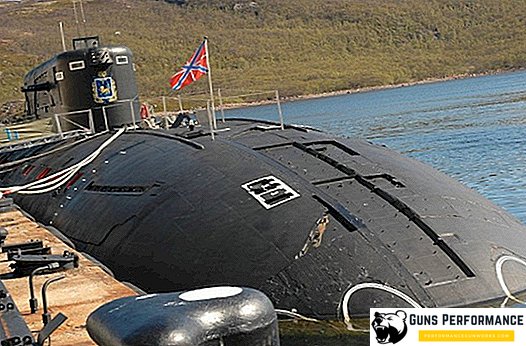GAZ-55 is a Soviet-made ambulance van produced by the Gorky Automobile Plant from 1938 to 1950. In the military industry is known under the symbol M-55. Gathered on the basis of GAZ-MM or GAZ-MM-B. For 12 years, designers have collected a little more than 12 thousand copies.
General information about GAZ-55
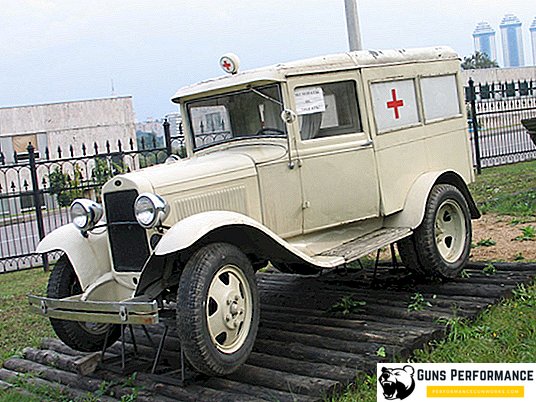
A new model of medical transport was developed due to the unsuitability of use in combat conditions of GAZ-AA and ZIS-5. They performed well in the civil sphere, but at the front showed unsatisfactory results. In 1938, the creation of a new generation of ambulance drawings was completed.
After the start of World War II, the country's leadership decided to simplify the design of the car to save resources and speed up the assembly process. The front fenders and rear mudguards stopped making by extruded technology; instead, flat sheets were used in production. The right front headlight and front brakes abolished. The device of the muffler was made simpler, the hydraulic shock absorbers were removed from the rear suspension, replacing them with standard ones.
GAZ-55 was ahead in terms of the quality of movement of other trucks that were used to remove wounded soldiers from the battlefield. On the ground cars moved confidently, not jumped. The absence of shaking and buildup is an important condition for the transportation of seriously wounded people. For all the time of operation, the technique saved the lives of thousands of people.
Mass production was stopped in 1950, when the development of a new generation, the GAZ-653, which was based on the GAZ-51 truck transport chassis, was completed. According to official documentation, for 12 years the company has produced 12,044 copies. In our time, there are no surviving machines of this model. Some people confuse GAZ-55 with GAZ-A, which is located in the Moscow Museum on Poklonskaya Hill.
GAZ-55 design

Specifications:
- Layout - rear-wheel drive;
- Wheel formula - 4x2;
- Length - 5.4 m;
- Width - 2 m;
- Height - 2.3 m;
- Wheelbase - 3.3 m;
- Ground clearance - 20 cm;
- The volume of the power plant - 3.28 l;
- Power - 50 horsepower;
- The maximum speed is 50 km / h.
Ladder-type side frame made by stamping technology. To the front of the frame fastened power plant. The gasoline engine, consisting of four cylinders, had an in-line structure. The working volume was 3.28 liters, and the maximum power was reached at 2.8 thousand revolutions and was 50 horsepower. The motor worked together with a four-speed manual transmission (three front, one rear gear).
For cooling the power plant answered water radiator, located in front of her. The fuel tank was placed behind the torpedo over the passenger's knees. Such a device provided self-flowing gasoline to the carburetor. The engine was started by electric starter. Electrical equipment operated at a voltage of six volts. Engine power was enough to accelerate to 70 km / h, which for the 40-50s of the last century was considered a good indicator.

Traditionally, the rear and front axles were attached to the frame. For fixing the front axle, one transverse semi-elliptical springs and a pair of lever hydraulic shock absorbers of unilateral action were used. Two longitudinal springs of cantilever type were used to fasten the rear axle to the frame structure.
In the device of the rear axle included the main gear, which is integrated into the work of the gearbox with a propeller shaft. The driveshaft received a complex construction: it was installed in a pipe and rigidly attached to the main gear case.

The axles got different wheels. Forward, rubber tires 6.5–20 were installed, and backward, disc-type twin wheels with rubber tires of the same size. The mechanical brake system operated on all wheels (before the beginning of the Second World War). The basis of the work lay cable drive. There was also a hand brake blocking the rear axle wheels.
Body frame made of wood. Outside, it was trimmed with sheet steel, and the interior was assembled from sheets of plywood. The driver's zone was separated from the sanitary compartment by a partition. The cabin was heated with exhaust pipes. To convert the heat from them used two heaters. They were on the floor and disguised as shops. To maintain fresh air inside the body, the crew used a ventilation system. It consisted of three fans: two were drawing in air, one was pulling. The fans were in the roof. The longline structure could accommodate up to three wounded soldiers.
To illuminate the road in the dark, the driver used a pair of electric headlights (after the start of the Second World War only one left). They, together with the horn, were attached to a beam installed between the front wings. To clean the windshield from dirt and precipitation, the driver used one wiper. It was connected with a tube to the inlet manifold of the carburetor, due to which the vacuum drive was activated and the wiper was brought to a working condition.
The front bumper was built from two steel beams. He coped with the task of protecting vehicles from minor damage. Rearview mirror installed on the left rack of the cab. To simplify the landing designers added steps to the device, which is a single design with the front wings.
GAZ-55, which was used in civil medicine, was painted in white, gray and sand color. For the military industry, the body was covered with a special paint of a protective color. Above the cabin on the roof was a signaling lantern with a cross. He was turned on during urgent trips so that the drivers of oncoming cars would give way.

In the cab of the car in front of the driver was a dashboard, consisting of an optical fuel gauge, ammeter and speedometer. To the left of the panel was located the ignition lock. External illumination of the indicators was a small light bulb located at the top of the shield.
The basis of the steering system was a globoid worm and a double roller. The gear ratio of the steering mechanism is 16.6. The horn button and light switch were located in the center of the four-spoke steering wheel.
Behind the wheel, the engineers placed two levers. The first was responsible for adjusting the ignition timing, and the second for fixing the carburetor throttle position. Just above the gas pedal installed a special trigger that the driver used to start the engine. For the right foot, the chauffeurs made a special support to increase the comfort of working conditions.
What can be concluded about the GAZ-55?

The GAZ-55 car went through the entire Great Patriotic War, providing great support to the Soviet army. Wounded soldiers had to be taken out from under airstrikes, tank attacks and other hot spots. The main advantages of the 55th model include:
- Simple and reliable design;
- High stock of working resource of the main technical units;
- Comfortable working conditions (up to simplified versions of the times of the Second World War);
- High permeability;
- Good performance.
The main disadvantage was the lack of spare parts and tools for repairs on board transport. The designers sacrificed them in favor of expanding the sanitary compartment to increase the maximum load for wounded soldiers. Despite this, in the event of a breakdown, it was possible to carry out operational repair work in the nearest settlement.


